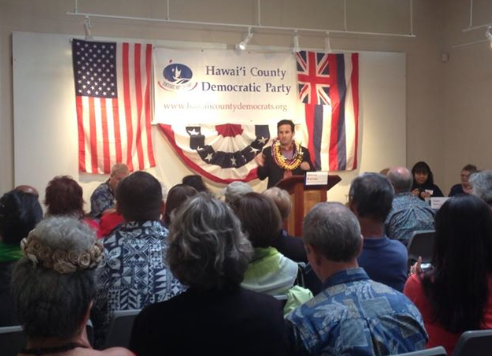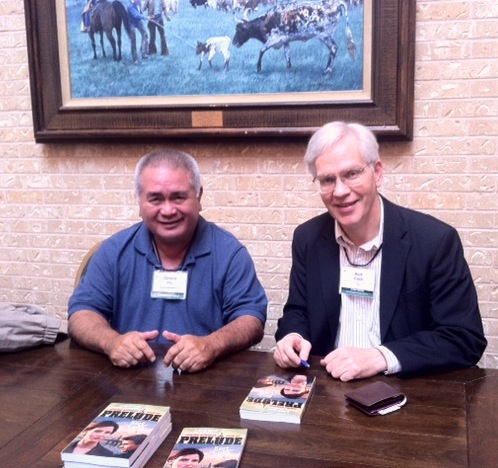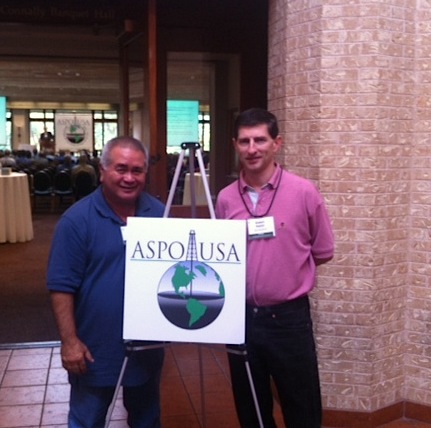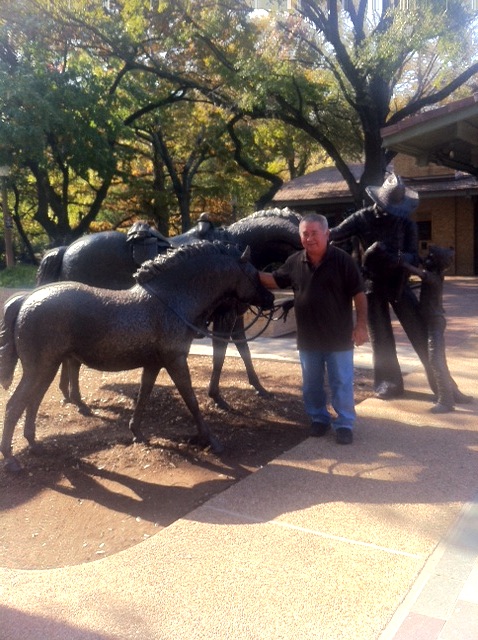Richard Ha writes:
On Saturday, I was on a geothermal panel at the Hawai‘i Island Democratic Party Convention, which was held at the Volcano Art Center. 
Also on the panel were State Senator Russell Ruderman and former Big Island Mayor Harry Kim.
It went very well and I’m very optimistic. I think most of us just want to do the best for all of us.
I made it a point to tell the audience that I went to O‘ahu on behalf of the Big Island Community Coalition and testified in favor of four
geothermal bills. What the four bills had in common is that they all contained provisions for “home rule.” I told the audience: This was so you could have a say in the geothermal issue.
My main point was that we are competing with the world for oil. And we need to seek a competitive advantage for the Big Island, and this has to do with cost.
We all know that the price of oil price rise; it’s only a matter of when, and how high. So if we can find a lowest cost solution, this will protect us from a rising oil price. It does not matter what the alternative is, so long as it gives us a competitive advantage.
Right now, it’s geothermal that has the potential for giving us that competitive advantage, assuming we don’t drive up its cost so high that we lose that advantage. Whether or not we achieve its potential is up to our leaders and to the Puna community.
Here’s what I told the Democratic Party Convention:
We are on a search for “competitive advantage” for the Big Island. Organisms, organizations and civilizations do this – it is called “survival of the fittest.” It isn’t the strongest or the smartest that survive; it’s the ones that can adapt – Charles Darwin
My name is Richard Ha. I am a farmer here on the Big Island. Together with our 70 workers, we farm 600 fee simple acres at Pepe‘ekeo. We have produced multi-millions of pounds of bananas and tomatoes over the past 35 years.
In my search to find competitive advantage for my farm’s future, I’ve now been to five Association for the Study of Peak Oil (ASPO) conferences.
Here is what I took away from these conferences:
- Oil price quadrupled in the last 10 years.
- The last 11 recessions were associated with a spiking oil price.
- Oil is a finite resource.
- The world has been using three times the oil it has been finding for many years now.
- The days of cheap oil are over.
- The cost to produce the marginal barrel of oil – the last barrel, as in shale oil and tar sands – was $92 per barrel in 2011.
- The U.S. mainland uses oil for only two percent of its electrical generation. Hawai‘i uses oil for more than 70 percent of its electrical generation.
- Anything manufactured on the mainland with cheap oil embedded makes our local producers and manufacturers less competitive. This affects Ag products.
- It is not the supply or demand of oil that will cause the
greatest damage; it is the cost of oil. - How much time do we have? Because it is about oil cost, we have less time than we think.
ELECTRICITY ON THE BIG ISLAND
- Uses 180 MW at Peak.
- Most of the increase in electricity bills is caused by oil pass through.
- Bio mass – as in wood chips – and geothermal have base power potential.
- Solar and wind must add storage to become useful as base power.
- Storage at utility scale is prohibitively expensive today.
ECONOMY
- Big Island electricity rates have been 25 percent higher than O‘ahu’s rates for as long as anyone can remember.
- The Big Island has the lowest median family income in the state.
- The Pahoa School Complex has, at 89 percent, the highest percent of students participating in the free/reduced lunch program in the state. Ka‘u at 87 percent and Kea‘au at 86 percent are close behind.
Education is the best predictor of family income. Yet the Big Island’s high electricity cost takes away from its education budget.
Rising electricity rates act like a giant regressive tax. The folks who are able to leave the grid for PV do so. The folks left behind pay more for the grid. Many of these folks are the ones already on the lowest rungs of the economic ladder: THE ONES THE DEMOCRATIC PARTY IS CONCERNED ABOUT.
Rising electricity rates take away discretionary income. Two-thirds of our economy is made up of consumer spending. Bottom-up economics benefit all, from the rubbah slippah folks to the shiny shoe folks.
GEOTHERMAL
- Cost to generate electricity from geothermal is estimated at 10 cents per kilowatt hour. This is less than half the price of electricity generated by oil, which is estimated to be 21 cents per kilowatt hour.
- The cost of the feedstock steam will be stable for a long time. The Big Island is estimated to be over the “hot spot” for 500,000 to a million years.
- Concentrating geothermal on the East Rift increases risk. Iceland mitigated the risk by keeping some oil-fired plants in operational reserve.
- Home Rule. The Big Island Community Coalition, myself as representative, personally voted for four of the bills that contained the Home Rule provision.
- Mediation vs. contested case hearing. It is a risk/benefit, cost, competitive advantage question. The lowest cost solution to accomplish the objectives is our target.
- How much time do we have? If cost is our primary concern, we have less time than we think.
I asked Dr. Carl Bonham: What happens if the oil price hit $200 per barrel? He replied that it would devastate our tourism industry.
I asked Dr. Bonham: What if we used geothermal as our primary base power? Wouldn’t we have a competitive advantage to the rest of the world as the oil price rose? He said, “YES.”
And, I asked, isn’t it fair to say that our standard of living would rise? He said: “YES.”
By giving the Big Island a competitive advantage in electricity rates, we can take care of all of us; not just a few of us.
WHERE ARE WE TODAY?
We are on a good track.
- We have 38MW of geothermal. The 25MW original contract, which is still tied to oil, is being renegotiated right now.
- HELCO has signed a 22MW power purchase agreement with Hu Honua. This is proven, stable and affordable technology – firewood, boil water.
- HELCO has issued a 50MW request for geothermal proposals.
These 110MWs of stable, affordable electricity base power represent 60 percent of the Big Island’s peak power usage.
O‘ahu has 10 percent of its base power electricity coming from stable affordable sources.
If we all work together, to take care of each other, we can be on track to have a competitive advantageover the rest of the world.
***
Some good resources on this topic:
Geothermal Assessment & Roadmap is a report compiled by the Pacific International Center For High Technology Research (PICHTR) under contract to Hawaii Natural Energy Institute, University of Hawaii in January 2013.
Peak Oil Warning From an IMF Expert: Interview with Michael Kumhof is a modeling done by the International Monetary Fund (IMF) economic team. Although it is not an official IMF document, it was done by the team that does economic analysis and modeling for the IMF.
We are dependent on air transportation, and this video, Charles Schlumberger: Out of Gas: Implications for Transportation, gives a sobering view of what we can expect in the future. Dr. Schlumberger is head of the air transport division of the World Bank.




